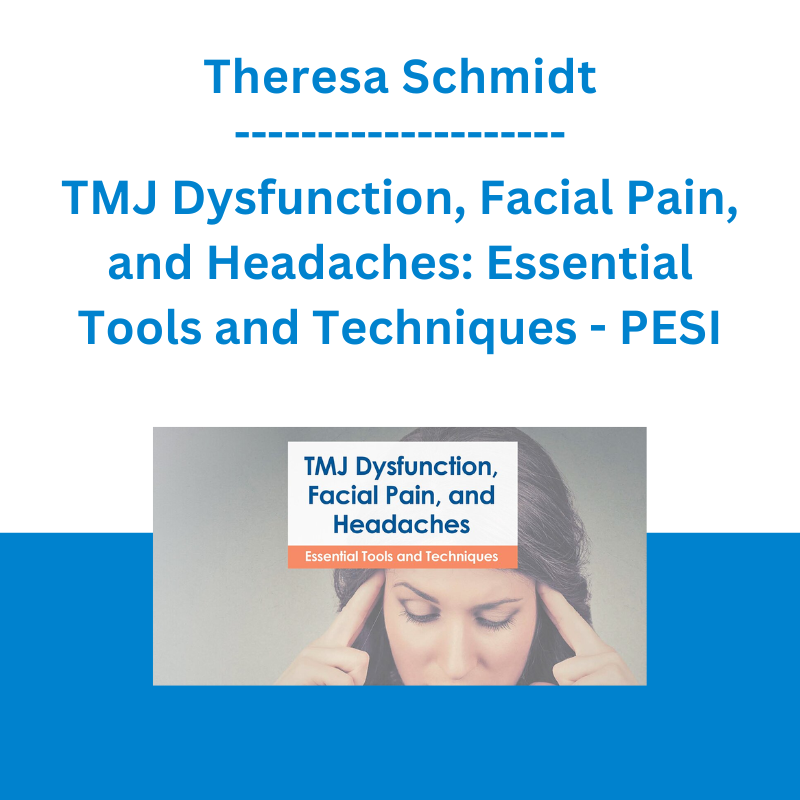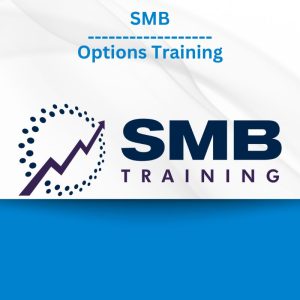*** Proof of Product ***
Exploring the Essential Features of “Theresa Schmidt – TMJ Dysfunction, Facial Pain, and Headaches: Essential Tools and Techniques – PESI”
TMJ Dysfunction, Facial Pain, and Headaches: Essential Tools and Techniques
Speaker: Theresa A. Schmidt, PT, DPT, MS, OCS, LMT, CEAS
Duration: 6 Hours
Format: Audio and Video
Description
Are you approaching TMJ dysfunction by focusing on the jaw only? Discover how lasting symptom relief necessitates more global thinking! The intensity of pain and limitations imposed by TMD can quickly turn life upside down for your patient. However, with application of the correct skills, you can get your patient walking, talking and chewing gum like a boss!
With an understanding of the pathomechanics and function of the TMJ complex, you will be able to address everyday activities like chewing and yawning — plus facial, head, neck and even ear pain caused by mobility impairments of the jaw and cervical spine.
Learn how to avoid tunnel vision and only ‘treating symptoms’ by discovering how much the entire cervical spine and even thoracic spine positioning impacts the TMJ. You will learn easy to apply and effective techniques to integrate:
- Myofascial and positional release
- Joint and soft tissue mobilization
- Craniosacral therapy
- Neuromuscular re-education techniques
You will gain essential skills to successfully treat this multifaceted diagnosis with techniques that reduce pain on the very first visit. Prolong the effects of your manual therapy with proven HEP tactics that help with everyday activities like eating, smiling, and yawning without pain.
Speaker
Theresa A. Schmidt, PT, DPT, MS, OCS, LMT, CEAS
Educise PC
Dr. Theresa Schmidt is an orthopedic physical therapy specialist and massage therapist integrating traditional and alternative medicine with emphasis on manual therapy, precision exercise, wellness, Reiki, hypnosis, and mindfulness. She presented for NASA/Inomedic, Johns Hopkins, Cleveland Clinic, Vanderbilt Med, Wake Med, and professional associations. She received her doctorate at UNE and served as faculty at Touro PT Programs and CUNY Queens Colleges in NY. She is a published author, Expert Consultant, Reiki Master Instructor.
Speaker Disclosures:
Financial: Theresa Schmidt has employment relationships with Educise and Home CEU Connection.com. She receives a speaking honorarium and a consulting fee from PESI, Inc. She has no relevant financial relationships with ineligible organizations.
Non-financial: Theresa Schmidt is a member of APTA and AMTA. She has no relevant non-financial relationships.
Objectives
- Appraise the anatomy and function of the TMJ.
- Investigate signs and symptoms of temporal mandibular joint (TMJ) disorders.
- Differentiate key components of TMD examination and functional outcomes measures.
- Investigate the relationship between movement impairments of the TMJ and cervical spine.
- Analyze the role of poor posture in TMD.
- Integrate manual therapy into a plan of care to manage mobility impairments of TMD.
- Develop home management principles for TMD including posture, exercise, biopsychosocial and self-applied manual therapy interventions.
- Propose integrative methods of pain and disability management for TMD rehabilitation.
Outline
Anatomy and Functional Aspects of the TMJ and Cervicocranial Complex
- Osseous and myofascial elements
- Muscles of mastication, mandibular elevation, depression
- TM disc arthrokinematics
Etiology of TMD
- Demographics, symptom and medical/dental history
- Orthotics/braces, work/play history, stress effects, computer work
- Bruxism, tinnitus, concussion, whiplash, dizziness, breathing issues, neuropathic and referred pain, headaches
Signs and Symptoms
- TMD and TMD-related headache
- Ear and neck pain
- Imaging studies
Examination
- Observation, palpation of craniocervical and upper quarter
- Location of trigger points
- Posture, facial symmetry, cervical spine position, tongue position, mobility, teeth/bite alignment
- ROM and strength
- Joint mechanics: chewing, eating, mouth opening, Valsalva, cough/sneeze
- Condylar translation, rotation
- Cervical motion associated with jaw opening/closing
Functional Assessment Tools
- TMD Disability Index (Steigerwald Maher TMD Disability Index- 10Q), Neck Pain Disability Index (NDI), CCFT
Manual Therapy & Mobility Impairment Interventions
- Indications and Contraindications
- Mobility Impairment Interventions
- Soft tissue mobilization, myofascial release
- Positional release, muscle energy, myofascial and trigger point release
- Posture alignment
- Neuromuscular re-education, correction of condylar rotation, jaw opening/closing correction, craniosacral release, massage, joint mobilization
- Cervical and scapular mobility considerations
Therapeutic Exercise and Home Program Design
- Literature review
- Rocabado 6 x 6 program
- Kraus’ TMD exercise program
Case Studies and Problem Solving
Target Audience
- Physical Therapists
- Physical Therapist Assistants
- Chiropractors
- Massage Therapists
- Athletic Trainers
- Dentists
- Other Rehab and Healthcare Professionals
Please see the full list of alternative group-buy courses available here: https://lunacourse.com/shop/










 Trade Like Mike - The TLM Playbook 2022
Trade Like Mike - The TLM Playbook 2022  Toshko Raychev - Profit System + ITF Assistant
Toshko Raychev - Profit System + ITF Assistant  Sovereign Man Confidential - Renunciation Video
Sovereign Man Confidential - Renunciation Video